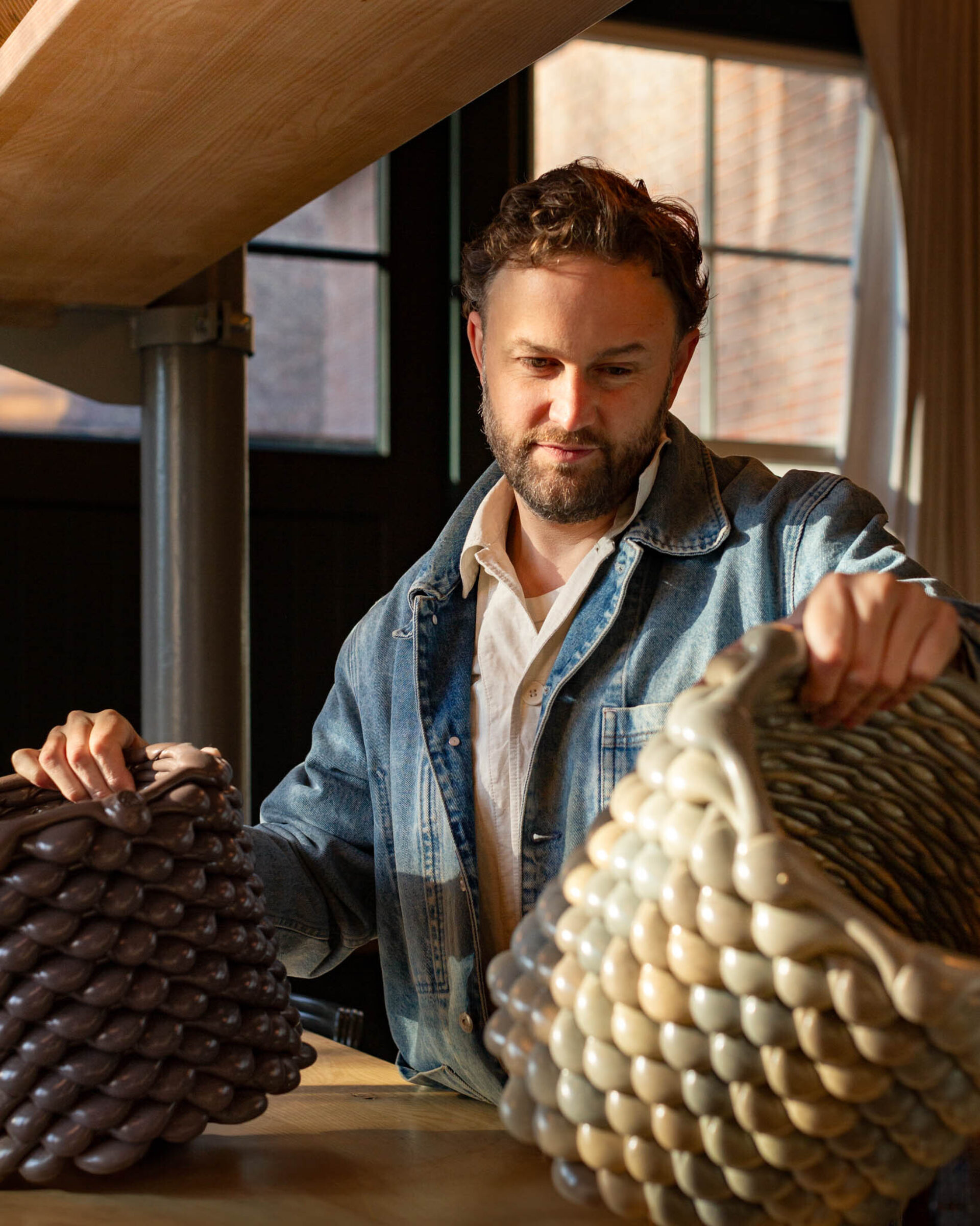

Core tenets of longevity, functionality, and joy guide the Kooij collection. Of each object we ask: is this a permanent, worthy application of the resources used?
In 2009, Dirk van der Kooij founded this studio in the basement of the Design Academy, Eindhoven. His guiding question was seemingly simple: could plastic be an honest, durable material? Six pizza ovens welded together proved that yes, it could. The resulting Elephant Skin series saw recycled plastic wrinkle and contract as it cooled outside of a mould, conjuring a rich, living tactility. The ultimate imitator had finally found an identity of its own.

Elephant Skin set a precedent for the work that would follow: across the collection, we have found new life in unlikely places. Discarded CDs, leather sofas, kitchen appliances, chocolate moulds, and diseased wood all present rich textural and structural fodder. A romance with unconventional materials necessitates that form follow process. Our family of house-developed presses, robots, and extruders have directly shaped the identity of the collection. The limitations of these imperfect machines have gifted a visual language which envelops the function, tactility, and beloved oddness of the Kooij collection. |

Working alongside our patchwork of machines is a studio of highly passionate craftspeople. Carpenters, welders, colourists, and finishers breathe life into the work. It is only through a union of crafts and technology that we are able to carry waste from loss to luxury.
A decade since this adventure began, we produce a tightly curated range of forever furniture in our Amsterdam-based factory. Select pieces have joined the permanent collections of the Stedelijk museum, MoMA New York, MoMA San Francisco, Vitra Design Museum, Design Museum London, and the National Museum in Oslo.
